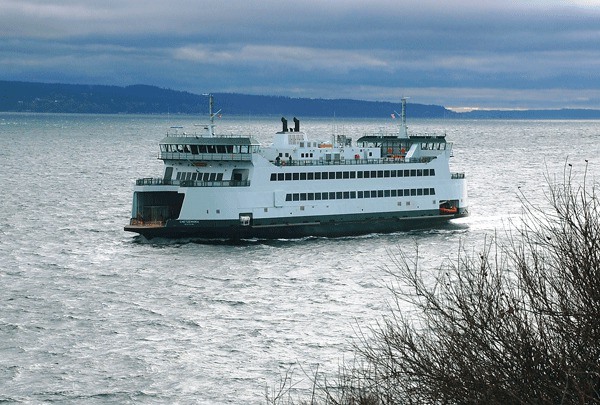It was a tough first week on the job for Whidbey Island’s new ferry.
The 273-foot Chetzemoka, the ferry that Gov. Chris Gregoire christened Sunday as the ship built to handle the conditions common to the roughest route in the system, had cancelled a total of eight sailings as of Thursday afternoon.
According to Marta Coursey, communications director for Washington State Ferries, both the 8:30 p.m. sailing from Port Townsend and the 9:15 p.m. from Coupeville were cancelled Monday evening due to high winds. The highest gusts recorded at Whidbey Island Naval Air Station were clocked at 61 mph.
Similar weather conditions forced the cancellation of three more round trips — comprising a total of six individual sailings — Thursday morning. Again, sustained winds of about 40 knots and gusts of over 60 knots were largely responsible.
The Chetzemoka began service on the Coupeville-to-Port Townsend ferry on Monday, Nov. 15, nearly three years to the day that Washington State Ferries Secretary Paula Hammond retired the Steel Electrics for safety concerns. The run has since been serviced by the Steilacoom II, a 50-car ferry leased from Pierce County.
The smaller vessel was not built for the rough conditions common to Admiralty Inlet and suffered a higher degree of cancellations the 80-year-old Steel Electrics. The $76.5 million Chetzemoka, modeled after the Island Home ferry on the East Coast, was expected to be able to handle just about everything the run could throw at her.
Coursey said that the weather conditions on the run this week should not reflect poorly on the new vessel’s capabilities, as 60 knot wind gusts are conditions that no ferries on this run, past or present, could operate in.
“That’s over 60 mph,” Coursey said.
In fact, this week’s weather also resulted in cancellations on the Port Defiance-to-Tahlequah run and a “series of delays and cancelled sailings in the San Juans as well.”
But while that may be true for the Steilacoom II, it may not always have been the case for the Steel Electrics. Captain Mark Haupt, a senior skipper on the run, said he himself operated the older ferries in 50 to 60 mph winds. While it wasn’t common and could depend greatly on other conditions, such as wave height, he said it would have been “marginal” for the retired vessels.
However, he also said that this week’s cancellations don’t necessarily mean that the new ferry can’t handle similar weather conditions. Crews were able to operate in 60 mph winds with the Steel Electrics because of their familiarity with the ships and their abilities.
“We weren’t willing to make those trips (this week) because we don’t have that track record or experience,” Haupt said.
He also said that the Chetzemoka has qualities its progenitors did not, such as a shallower draft, bigger engines and superior maneuverability. Even if it later becomes apparent the vessel can’t operate in high winds, it may be able to run during certain tidal conditions that were impossible for the Steel Electrics.



